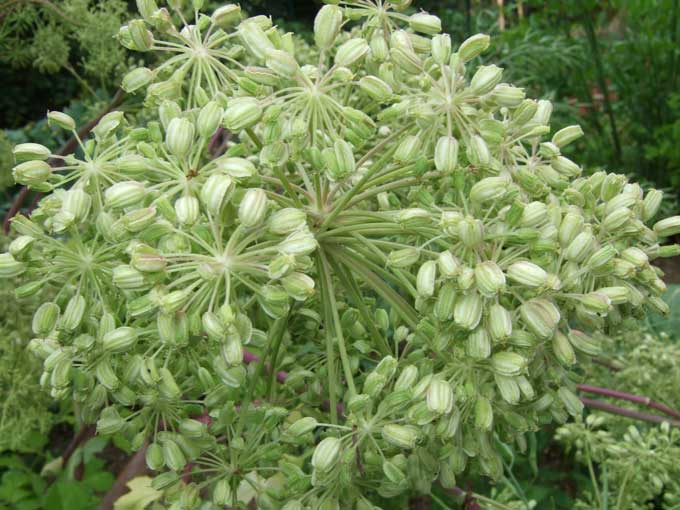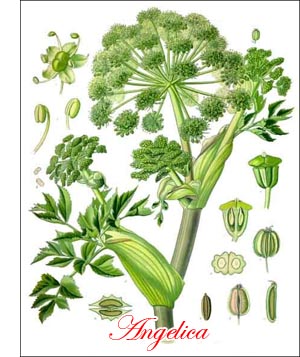Species (Family)
Angelica archangelica L. (Apiaceae/Umbeliferae)
 |
| Pics of Angelica |
Archangelica officinalis Moench and Hoffm.
Part(s) Used
Fruit, leaft, rhizome, root
Food Use
Angelica is widely used in foods. Angelica is listed by the Council of Europe as a natural source of food flavouring (stem: category 1; other parts and preparations: category 4, with limits on coumarin and furanocoumarin) (see Appedix 23).
In the USA, agelica is listed as GRAS (Generally Recognised As Safe).
Herbal User
Angelica is stated to possess antispamodic, diaphoretic, expectorant, bitter aromatic, carminative, diuretic and local anti-inflammatory properties. It has been used for repiratory catarrh, psychogenic asthma, flatulent dyspepsia, anorexia nervosa, rheumatic diseases, peripheral vascular disease, and specifically for pleurisy and bronchitis, applied as a compress, and for bronchitis associated with vascular deficiency.
The German Commission E monograph states that angelica can be used for lack of appetite and dyspeptic complaints such as mild stomach cramps and flatulence. Many related species, including A. sinensis (dong quai) are traditionally used in Chinese medicine.
Dosage
Dried leaf 2-5 g by infusion three times daily.
Leaf liquid extract 2-5mL (1:1 in 25% alcohol) three times daily.
Leaf tincture 2-5 mL (1:5 in 45% alcohol) fhree times daily.
Dried rhizome/root Daily dose 4.5g or 1-2 g by infusion three times daily.
Rhizome/root tincture 0.5-2 mL (1:5 in 50% alcohol) three times daily.
Pics of Angelica
| Pics of Angelica |
 |
| Pics of Angelica |
 |
| Pics of Angelica |
 |
| Pics of Angelica |








0 comments:
Post a Comment